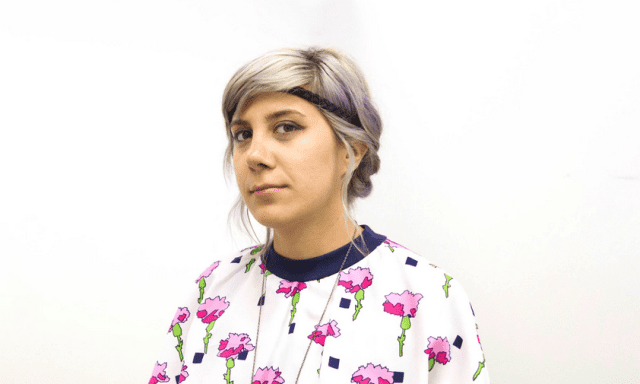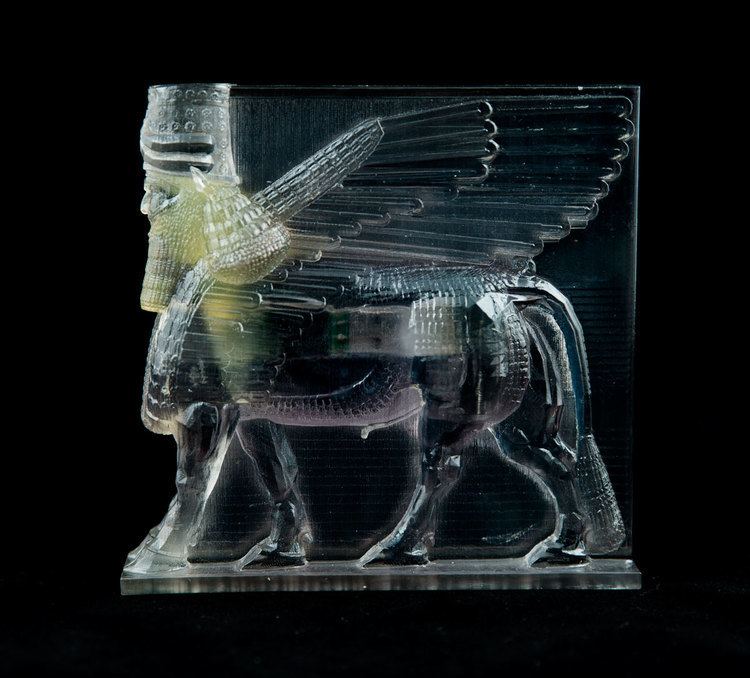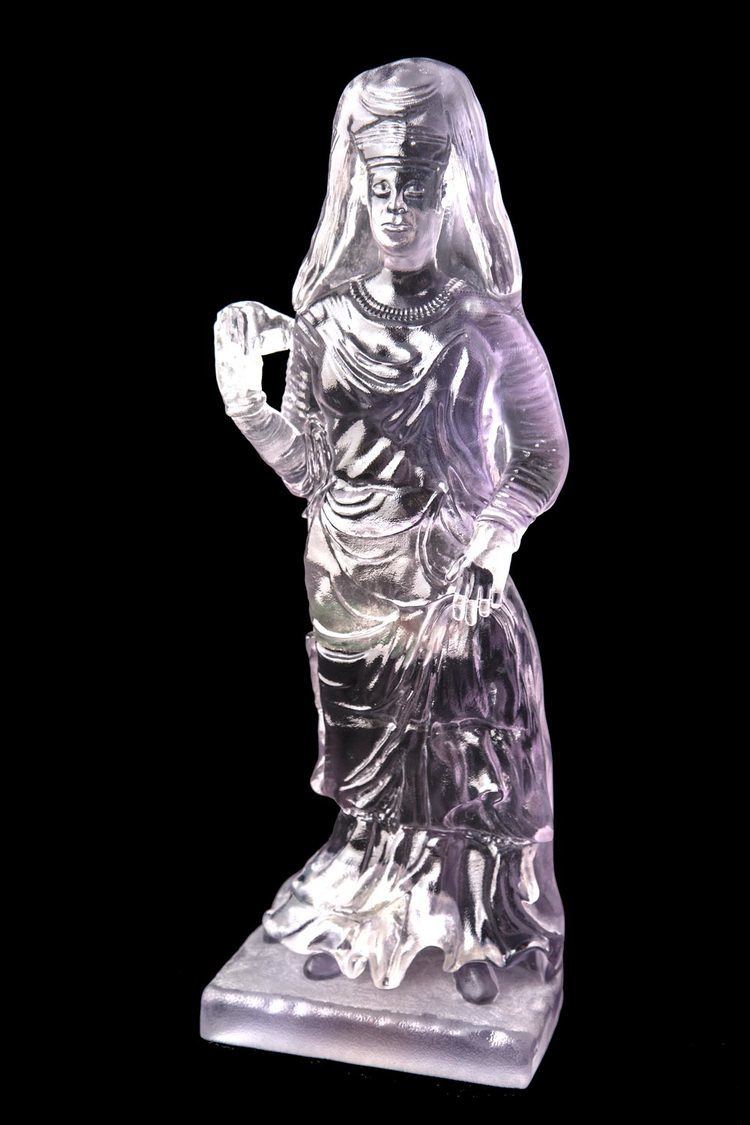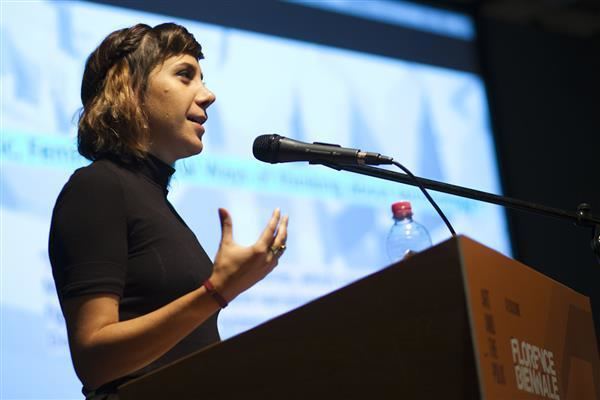 | ||
Education | ||
Morehshin Allahyari is an Iranian-American artist who works in new media, as well as an educator, curator, and activist. Much of her work deals with topics that question today’s political, social, cultural, and gender norms. She is a 2016-2017 research resident at Eyebeam.
Contents
- Tedxdu morehshin allahyari collaborative art in countries of conflict
- Early life
- Work
- Like Pearls
- Material Speculation ISIS
- First Series 2014
- Second Series 20142015
- References

Tedxdu morehshin allahyari collaborative art in countries of conflict
Early life

Allahyari was born and raised in Tehran, Iran, during the Iran-Iraq War. She took an interest in the arts from a young age. At age 12, she joined a private creative writing course, where she learned about the importance of telling personal narratives. This group continued until she was 18 and became a launching point for the rest of her work. Allahyari attended the University of Tehran from 2003 until 2007 and was awarded her Bachelor of Arts, in Social Science and Media Studies. From 2007 until 2009 she attended the University of Denver and received a Master of Arts in Digital Media Studies. From 2010 until 2012 Allahyari attended the University of North Texas and was awarded a Master of Fine Arts in New Media Art.
Work

Her piece "The Recitation of a Soliloquy" features diary entries by her mother from her childhood in Iran. She moved to the United States in 2007. Her work often looks at her home country of Iran with a critical eye, portraying images of censorship, while simultaneously juxtaposing these images with those of a capitalist West. She uses technology as part of a “philosophical toolset to reflect on objects; a poetic mean to document the personal and collective lives we live and our struggles as humans in the 21st century".

In 2015, Allahyari was awarded the Autodesk artist in residency, where she worked on her project, Material Speculation: ISIS. That year she also received a Finalist Award from the Joan Mitchell Foundation Emerging Artists Grant Program.
In recognition of her work, Allahyari received a Special Award at the Florence Biennale in 2015.

A solo exhibition of Allahyari's work "Everything in Between" was held at Verge Center for the Arts in Sacramento in 2016.

As a 2016-2017 Research Resident at Eyebeam, Allahyari worked on a project centered on digital colonialism and 3D fabrication.
"Like Pearls"

"Like Pearls" (2014) is a collection and glitched conglomeration of sex and romance spam from Allahyari's Farsi email and from online underwear shops in Iran. She layered GIFs with beating hearts, blooming flowers, flying birds, and moving butterflies on top of the advertisements. Allahyari points out the social and cultural phenomena at work with the advertisements, citing Islamic law in Iran for the reason that the female body is censored and yet simultaneously sexualized. She states, "The female body in this case remains the object and product of a 'modern love/gaze'. . . Interestingly, in these underwear advertisements the female body is the object of both Western and Islamic polarity. Under each, the female body is the property of men, so romance and love in this context adds another layer of ownership, aggression, and masculinity". Thus, the titular reference is to the famous Islamic saying "a woman in a Hijab is like a hidden pearl in its shell". "Like Pearls" is intentionally uncomfortable and disruptive, to draw attention to the objectification and misogyny female bodies face. In an interview with Hyperallergic, Allahyari says, "the whole female body and even the government’s agenda in Iran to encourage women to wear full hijab/chador is all about censoring the female body. Your body as a woman is always objectified and then censored politically … and culturally".
"Material Speculation: ISIS"

"Material Speculation" is a project that is a combination of digital fabrication and 3D printing that "inspects Petropolitical and poetic relationships between 3D Printing, Plastic, Oil, Technocapitalism and Jihad". Part of a group exhibition at John Jay College of Criminal Justice, The Missing: Rebuilding the Past, artists use creative means to protest "preventable loss" from destruction in conflict zones in Iraq and Syria. From 2015 to 2016, Allahyari recreated twelve artifacts, all which were original and were destroyed by ISIS in 2015 at Mosul Museum. Inside of each artifact there is a USB drive and/or memory card containing all of the research she conducted on the topic, including images, maps, videos, and PDF files. Other artists in the exhibit provide evidence of the violence seen in war, but Allahyari's pieces are indicative of a look towards the future. She is "seeking an institution that is able to preserve the data in a digital archive to provide open access to all this information so others may construct their own 3D models. To her, even that act would be one of resistance". She is creating, through 3D modeling and printing, some of the artifacts destroyed by ISIS.
In early 2016, Allahyari published one of her reconstructions from “Material Speculation: ISIS,” as well as a dossier of her research, as part of Rhizome's series The Download. Through this commission, her object file for King Uthal was made openly available to anyone for 3D printing. She collaborated with Browntourage to create a virtual tour of 3D prints from the Material Speculation series, PRINT your REALITY. Users touring the virtual gallery may examine the 3D images by rotating them and watch the artist respond to questions about her work.
First Series (2014)
Allahyari's first series of "Dark Matter" casts a critical gaze on her home country and their censorship practices. Using 3D printing, Allahyari makes objects that either forbidden in her country or unwelcome by the Iranian government. "Dark Matter" is a "series of scathing and critical sculptural objects which she models in Maya and 3D prints. Their often humorous juxtapositions highlight ideas forbidden or frowned upon by the current Iranian government". Objects include a dog, a dildo, a satellite dish, a Barbie, a VHS tape, a pig, a gun, Buddha, and Homer Simpson. Allahyari describes this piece, saying, "I want to simultaneously resist and bring awareness about the power that constantly threatens, discourages, and actively works against the ownership of these items in Iran".
Second Series (2014–2015)
The second series of "Dark Matter (Second Series)" was commissioned by Forever Now to be gifted to NASA to be taken to the International Space Station. "Dark Matter (Second Series)" consists of 3D printed objects that are considered to be socially or culturally unwelcome, particularly in Iran, China, Saudi Arabia, and North Korea. Of this iteration of "Dark Matter," Allahyari states, "Dark Matter is intended to serve as a documentation of the lives we currently live as humans; the dark side, the invisible, the Dystopian lives that a minority (power/government) has created for a majority (people). I am interested in the idea of re-contextualizing and re-positioning these forbidden objects to another time/space". On November 11, 2014, Allahyari discussed her work as art in relation to astronomy with Roger Malina on Creative Disturbance as part of the countdown to the 100th anniversary of birth of Frank Malina.
